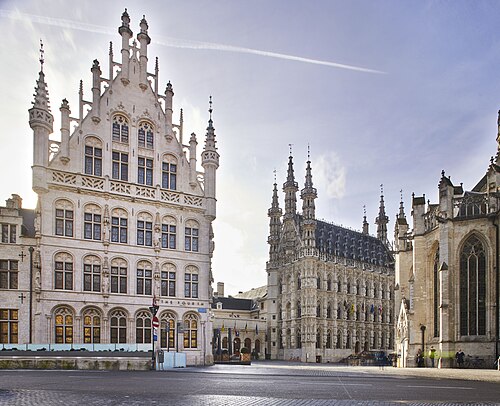Expats have loosen roots and look for peers to reconstruct a sense of community and navigate everyday life together. Here is Augustinus’ story… from 1450s.

Augustinus de Lovana was a 15th c. baker from today’s Flemish Brabant, in Flanders. This area has long been a crossroads of cultures, languages, and travellers. In the Middle Ages, artisans, merchants, and workers frequently moved in and out of the region and beyond. Augustinus’ story, as we learn from his last will, reflects this mobile medieval Europe— a world where men and women crossed borders, faced new customs and switched languages far more often than we typically assume today.

Born in Louvain, Augustinus eventually migrated south and settled in Pisa, which became his new home. He must have travelled across Tuscany regularly. At the time he made his will in 1453, he was in Lucca, staying with Johannes Renaldi, a tailor and fellow Brabanter, now citizen of Lucca. A small group of artisans gathered at Augustinus’ deathbed: a cloth merchant from Lucca, a barber from Pisa, and a cloth weaver from Bruges. Their presence testifies to the strength of expatriate and international networks in the Middle Ages.
Living abroad without wife or children, Augustinus had built his life in Pisa, rooted in the support of a close-knit community of fellow expatriates. Though his body would be buried in Brancoli (near Pisa), his friends and servants—all from Alamania, Brabant, and Brussels—were likely just as rootless as he was, relying on one another in the absence of family. Augutinus knew how vital this mutual support was for foreigners, and he wanted the community he had lived among for most of his life to remember him. He donated four florins to the Florentine confraternity of Santa Barbara, known for attracting mostly Flemish and Northern European members.

Proof of his bond with the two Tuscan cities he had been living in, it is in Lucca and Pisa that he wanted to be remembered through a form of memorial that was both visually prominent and devotionally meaningful. He didn’t just want his name preserved—he wanted his face to be remembered. Among the bequests in his will are two portraits: one painted on an altarpiece for a monastery in the Lucchese territory; one embroidered on a vestment for the Monastery of Nicosia, at the foothill of Monte Pisano.

In both, he wanted to be depicted kneeling beneath the Virgin Mary, holding the infant Jesus, and surrounded by a chorus of holy women: Saint Catherine, Saint Barbara, and Saint Gertrude the Great. His name had to be clearly visible, in memory of his father and brothers—relatives he may not have seen in many years, due to his life spent wandering across Europe.
Through paint and thread, this 15th-century expat baker sought not only to preserve the memory of himself, but also to keep alive the names and legacy of his family and homeland—anchoring his identity and roots in a foreign land.
Valentina Costantini
